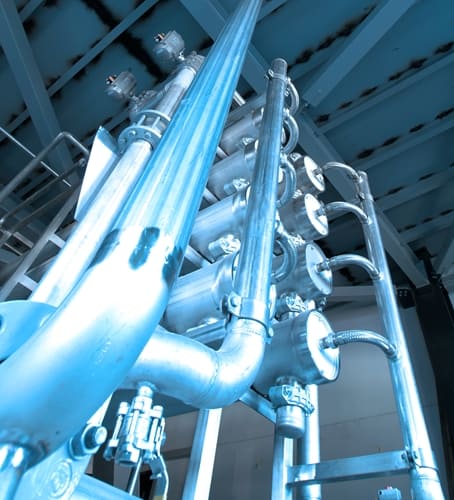The oil and gas industry has been advancing the heat exchanger market in various capacities, according to several reports recently published.
MarketsandMarkets explains that heat exchangers are an integral part of the petrochemical and oil and gas industry. The chemical industry is the most influential driver of heat exchanger business.
Get cracking
The global market for oil and gas equipment is expected to continue to grow to be worth $35.8 billion by the year 2022, according to Transparency Market Research.
Oil and gas equipment can be categorized in two parts: rotating and static equipment. Rotating equipment is comprised of valves, pumps and turbines, while static equipment includes valves, furnaces, boilers and heat exchangers.
“Cracking is the process of breaking the hydrocarbons into smaller pieces.”
Heat exchangers play an important role in processing oil and gas. They are used in the refining process in cracking units as well as in the liquefaction of natural gas. Cracking is the process of breaking the hydrocarbons that compose crude oil into smaller pieces, according to Chemguide.
Cracking takes place after the first round of distillation. Then, lubrication and heavy gas oils go through a cracking process. After cracking, a second round of distillation separates the pieces into groups. TechNavio says that heat exchangers come into play to separate oil from any water that is produced during the process.
The BBC explains that cracking is a thermal decomposition reaction, which means heat is used to break apart the hydrocarbons. Once the hydrocarbons are in smaller, more applicable pieces, they can be used to make fuels and polymers.
Still distilling
A report by the American Chemical Society explains that heat exchangers are also used in the diabatic distillation process. This process occurs when heat is transferred through a reboiler as well as inside the distillation column.
Part of the process involves pushing water through a series of trays to cool off the oil. Another portion circulates steam from the reboilers through a series of trays as well. Each tray has a heat exchanger. Introducing heat exchangers to the process has made it faster and more efficient, because they allow the reboiler to reach a higher temperature faster. Heat exchangers also help the condensers to cool faster.
Heating up
According to TechNavio, the oil and gas industry is also boosting the global waste heat recovery market. It is expected to grow 7.6 percent by 2019. Waste heat recovery is primarily done through the use of heat exchangers and other equipment such as turbines and industrial heating boilers.
“Between 20 and 50 percent of industrial energy output is wasted.”
A report from the World Economic Forum said up to half of industrial energy input is wasted. The way to utilize this wasted energy is through waste heat recovery. A U.S. Department of Industry report stated the converted heat can usually be used for generating electricity, heating and absorption cooling. Heat exchangers in this process are typically most useful for preheating air before it enters a furnace system. This takes some of the stress away from the furnace, allowing it to use less fuel and energy to heat the air itself.
The World Economic Forum reported governments and industries around the world begin to make environmentally friendly changes, and many have focused on striking a balance between three concepts: energy security, energy affordability and environmental sustainability. Large industries, such as oil and gas, have especially been looking into ways to achieve an ideal energy triangle.
According to the Department of Industry, low-temperature heat recovery, which is identified as being between 100 and 400 degrees, can use shell and tube heat exchangers to condense water vapor in the discharged gases.
In a report, Research and Markets explains that government regulations on greenhouse gas emissions have inspired the use of heat exchangers and other heat recovery equipment. Reusing wasted heat not only cuts down on emissions, but also reduces the amount of fuel needed to run oil and gas facilities. The report predicts that continued regulations on how environmentally friendly facilities need to be will keep driving the need for heat exchangers.

